Channel catfish perform during winter months
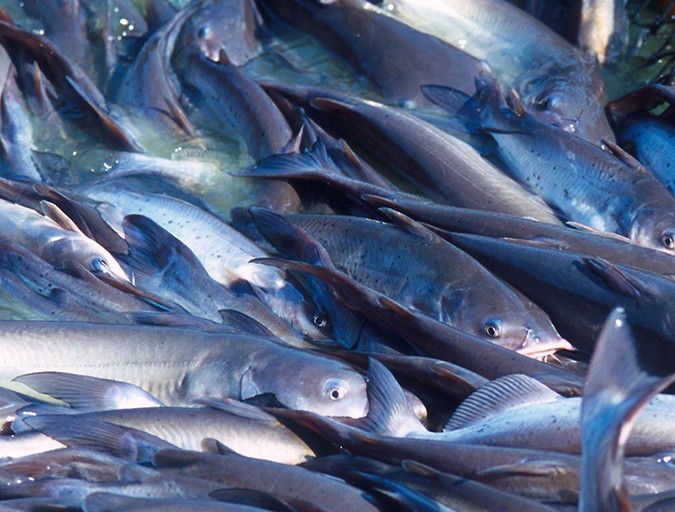
Production systems based on biofloc technology (BFT) result in high yields of various commercially-important aquatic animals because two important production-limiting factors, dissolved oxygen and total ammonia-nitrogen (TAN) concentrations, are maintained at near-optimal levels despite high stocking and feeding rates. The biofloc is a complex matrix of living organisms closely associated with particulate organic matter. High dissolved oxygen concentration is maintained by continuous aeration, which also maintains the biofloc suspended in the water column.
Unlike outdoor BFT production systems in the tropics that are operated year-round, the channel catfish studies were conducted only during the temperate-zone growing season and BFT production tanks were drained and idled at harvest. Operating the BFT system only during the growing season implies that at harvest the fish must be marketable or of a size appropriate for a subsequent stage of grow-out. Otherwise, fish will be moved unnecessarily. Additionally, four to six weeks are required at spring start-up for a fully functional biofloc to develop.
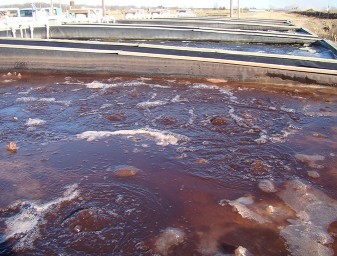
If an outdoor BFT production system is to be adopted by farmers at temperate latitudes, then data gaps related to system and fish performance over the winter must be addressed. Pond production of channel catfish requires that fish be over-wintered at least once before being harvested as food fish. Survival of fish to harvest is good and generally exceeds 75 percent. Recommendations for winter feeding of channel catfish vary feeding rates based on threshold water temperatures. Gains or losses in individual fish weight and net yield can depend on the winter feeding strategy used, and fish size and survival. High total suspended solids (TSS) concentration in BFT can affect negatively culture animal performance and removal of solids to 200-400 mg/L TSS is recommended. The objectives of the present experiment were to quantify changes in water quality and ammonia bio-transformation capacity and channel catfish performance throughout the winter.
Study setup
A detailed description of the experimental setup is available at the original publication or from the author. A biofloc technology production system was built with six wood-framed rectangular tanks with a slightly sloped bottom tanks (18.6 m2, mean 15.7 cubic meters of water, mean depth of0.81 m) lined with high density polyethylene (HDPE) located out-doors at the USDA Agricultural Research Service (ARS), Harry K. Dupree Stuttgart National Aquaculture Research Center (HKD-SNARC), Stuttgart, AR, USA, were used for this study.
The system was provided with sufficient continuous aeration, and waters from a previous BFT production experiment testing different levels of solids removal and contained low (153.3 ± 39.5 mg/L, mean ± SE) or high (790.0 ± 48.4 mg/L) TSS were retained for this study. Each tank required about 10 percent well water to complete filling. Triplicate tanks each were assigned randomly to the low and high TSS concentrations. Solids were not removed from tanks during this study. Standard water quality parameters were monitored and analyzed during the study. Ammonium chloride (untreated technical grade, 99.9 percent) was added to each tank on three occasions to measure TAN biotransformation over time.
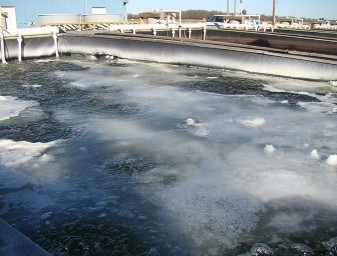
Channel catfish harvested from the previous BFT production experiment were re-stocked into tanks. Mean biomass at stocking was 7.8 ± 0.2 and 8.2 ± 0.5 kg/m3 for the low and high solids treatments, respectively, and did not differ significantly between treatments (P = 0.490). Mean initial weight did not differ significantly between treatments and averaged 560.8 ± 5.8 and 611.3 ± 22.9 g/fish for the low and high solids treatments, respectively. Fish in each tank were fed as much 32 percent protein commercial feed as they could consume in 10 min once the afternoon water temperature exceeded 16 degrees-C for two consecutive days, and the quantity recorded. Fish were harvested from all tanks on 16 April 2014, 152 days after stocking. At harvest, 25 percent of fish in each tank were weighed individually and the remainder were counted and weighed in bulk.
Results
Mean air temperature less than 0 degrees-C was recorded on 31 days, whereas mean water temperature was less than 0 degrees-C on 11 days and averaged −0.6◦C (Fig. 1). Water temperature did not differ significantly between treatments (P = 0.824) and the grand mean (±SD) was 7.9 ± 0.2 degrees-C. Mean daily dissolved oxygen concentration did not differ significantly between treatments (P = 0.681), and averaged 11.7 ± 1.6 mg/L. Ice, covering up to a maximum of about 75 percent of the tank surface, was observed on tanks during the coldest temperatures. No significant differences were detected between solids levels for mean TAN, NO2-N, and total alkalinity concentrations (Table 1). Although mean NO3-N concentration in the high solids treatment was 43 percent higher than in the low solids treatment, the difference was not statistically significant (0.05 level; P = 0.062).
| Variable | HIGH initial TSS concentration | LOW initial TSS concentration | Pooled SE | Pr > F |
|---|---|---|---|---|
| Total ammonia-nitrogen (mg/L) | 0.16 | 0.20 | 0.03 | 0.292 |
| Nitrite-nitrogen (mg/L) | 0.38 | 0.33 | 0.05 | 0.528 |
| Nitrate-nitrogen (mg/L) | 93.44 | 65.32 | 7.75 | 0.062 |
| Soluble reactive phosphorous (mg/L) | 29.80 | 17.52 | 1.44 | 0.004 |
| Chlorophyll a (mg/m3) | 378.2 | 1,178.1 | 48.8 | <0.001 |
| Total suspended solids (mg/L) | 659.5 | 205.6 | 23.5 | <0.001 |
| Total alkalinity (mg/L as CaCO3) | 102.2 | 98.1 | 5.2 | 0.600 |
| pH | 7.78 | 7.98 | 0.04 | 0.031 |
Regarding catfish production, at harvest, mean individual weight did not differ significantly between treatments (Table 2). There was no significant difference (P = 0.776) between high solids treatment initial and final individual weights, but the final individual weight in the low solids treatment was significantly greater (P = 0.046) than the initial weight. Fish were fed on 16 days during this study, 80 percent of which occurred from mid-March through 11 April. Daily feed consumption averaged 68.6 ± 9.5 g/m3 and 69.9 ± 9.5 g/m3 in the low and high solids treatments, respectively, during the last 10 days of feeding. This feed rate typically is observed from late-June through mid-July in the BFT tanks stocked with channel catfish at 12 fish/m2. Total feed consumption did not differ significantly between treatments (P = 0.410), averaged (±SE) 0.95 ± 0.01 kg/m3 and 0.96 ± 0.00 kg/m3 for the low and high solids treatments, respectively, and does not explain the difference between low solids initial and final weights. This difference more likely was the result of sampling error since initial weight was obtained by weighing individually all fish in each tank, whereas final weight was obtained by weighing a random sample of 25 percent of fish in each tank.
| Variable | HIGH initial TSS concentration | LOW initial TSS concentration | Pooled SE | Pr > F |
|---|---|---|---|---|
| Initial weight (g/fish) | 611.3 | 560.8 | 16.6 | 0.098 |
| Final weight (g/fish) | 598.8 | 579.1 | 24.4 | 0.599 |
| Initial biomass (kg/m3) | 8.2 | 7.8 | 0.4 | 0.490 |
| Final biomass (kg/m3) | 7.9 | 7.7 | 0.4 | 0.701 |
| Net fish yield (kg/m3) | -0.3 | -0.1 | 0.1 | 0.146 |
| Survival (%) | 99.9 | 99.7 | 0.0 | 0.508 |
The capability to bio-transform ammonia without a substantial lag once feeding resumes was observed for both treatments in this study. When fish began to feed in mid-March (day 124), mean daily consumption increased rapidly in both treatments from 47 g/m3 to 69 g/m3, on average, where it remained for the last 10 feed days of the study. Yet there was no evidence of a sudden increase in TAN concentrations in either treatment; TAN increased from 0.02 to 0.08 and from 0.02 to 0.07 mg/L NH4-N in the low and high solids treatments, respectively. Nitrite decreased from 0.59 to 0.49 in the low solids treatment, and increased from 0.05 to 0.07 mg/L NO2-N in the high solids treatment. Data for both solids treatments were similar.
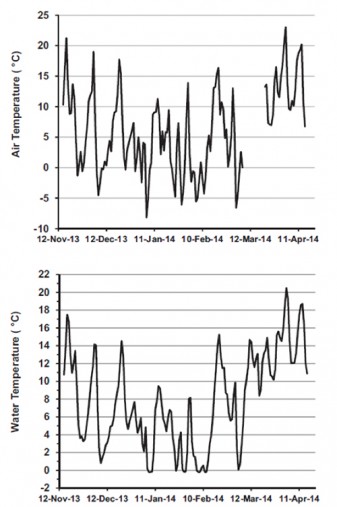
Although channel catfish will consume feed at water temperatures greater than 7 degrees-C, and feed rate and frequency based on threshold temperatures between 10 and 20 degrees-C is recommended, fish in the present study were fed to apparent satiation only after afternoon water temperature exceed 16 degrees-C for two consecutive days. Estimated daily feed consumption in the present study was 0.9 percent of fish biomass and was consistent with daily feed consumption by market-size channel catfish in other winter feeding studies.
Catfish survival throughout the winter was high, did not differ significantly between treatments, and averaged 99.8 percent (Table 2). A total of three fish died: one in a high solids tank, and one in each of two low solids tanks. At harvest, fish appeared robust and healthy. Survival of market-size channel catfish over the winter in some studies exceeded 90 percent, whereas in other studies survival ranged from 64 to 84 percent. Mean final biomass and net fish yield did not differ significantly between treatments (Table 2). Net fish yields were 1-4 percent less than initial fish biomasses. Other researchers report negative net yield (losses of 2-10 percent) for over-wintered channel catfish, often when fish are not fed. It is possible that net yields in the present study would have been positive had feeding been initiated at a lower threshold temperature.
Perspectives
In this research, BFT water with a low initial TSS concentration transitioned to a phytoplankton dominated system whereas water with a high initial TSS concentration remained a bacterially dominated (brown water) system. This divergence resulted in changes in water quality variables over the course of the experiment that differed between treatments.
The ability of the biofloc system to bio-transform ammonia-nitrogen was retained at low winter water temperatures and in the absence of sustained TAN input in both treatments, although this really is of minor importance because fish are not consuming feed and excreting ammonia. What is important, though, is that the capability to bio-transform ammonia without a substantial lag is retained once feeding resumes. High biomasses of market-size channel catfish were maintained through the winter with high survival and in good condition in both treatments. Net yield was negative in both treatments, but might have been positive had feeding begun at a threshold temperature of 10 degrees-C instead of 16 degrees-C.
Having an active biofloc in the spring obviates the start-uptime required to establish a new, fully functional biofloc and the associated TAN and nitrite spikes. Of course, an economic analysis would be necessary to determine the costs and economic viability of maintaining the biofloc through the winter.
Author’s note: This study was originally published in Aquacultural Engineering 64 (2015) 60-67. This study was funded by the USDA/ARS under project number 6225-31630-006-00D
Now that you've reached the end of the article ...
… please consider supporting GSA’s mission to advance responsible seafood practices through education, advocacy and third-party assurances. The Advocate aims to document the evolution of responsible seafood practices and share the expansive knowledge of our vast network of contributors.
By becoming a Global Seafood Alliance member, you’re ensuring that all of the pre-competitive work we do through member benefits, resources and events can continue. Individual membership costs just $50 a year.
Not a GSA member? Join us.
Author
-
Bartholomew W. Green, Ph.D.
United States Department of Agriculture
Agricultural Research Service
Harry K. Dupree Stuttgart National Aquaculture Research Center
P.O. Box 1050
Stuttgart, AR 72160 USA[118,111,103,46,97,100,115,117,46,115,114,97,64,110,101,101,114,71,46,116,114,97,66]
Tagged With
Related Posts
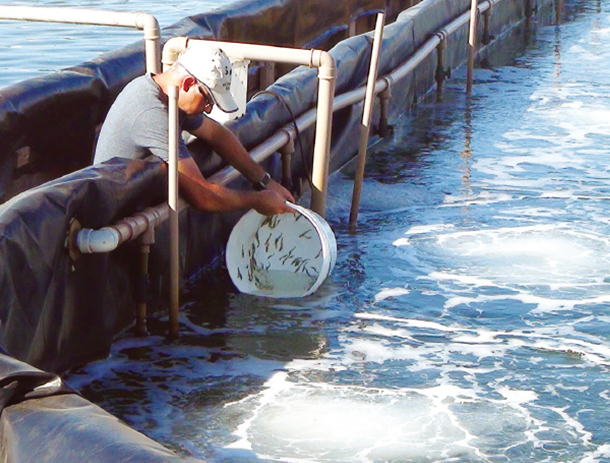
Innovation & Investment
Brazil study results encouraging for injector
Zero-exchange biofloc systems allow elevated stocking densities and production, but also require more dissolved oxygen and thorough water circulation. A new type of air injector uses only a centrifugal pump to recirculate water while naturally aspirating ambient air.
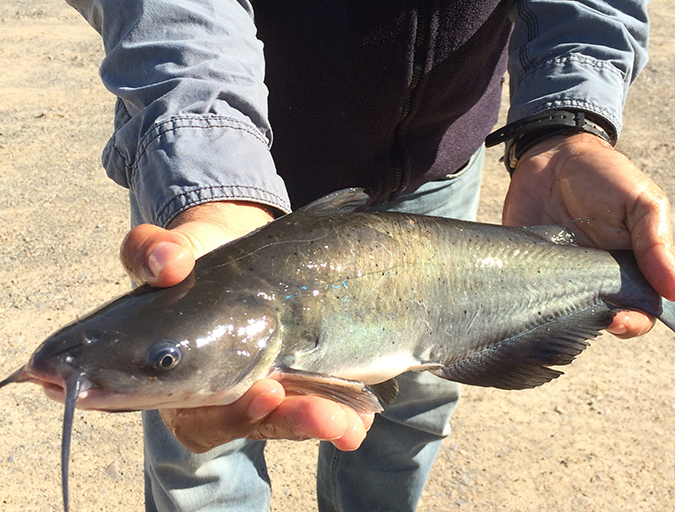
Intelligence
Commercial implementation of in-pond raceway system
An in-pond raceway system in Alabama was utilized to supply various niche markets, including Asian grocery store chains that desired fresh live fish, recreational pond stocking businesses, private pond owners and fee fishing operations. In many cases, a higher price was achieved.
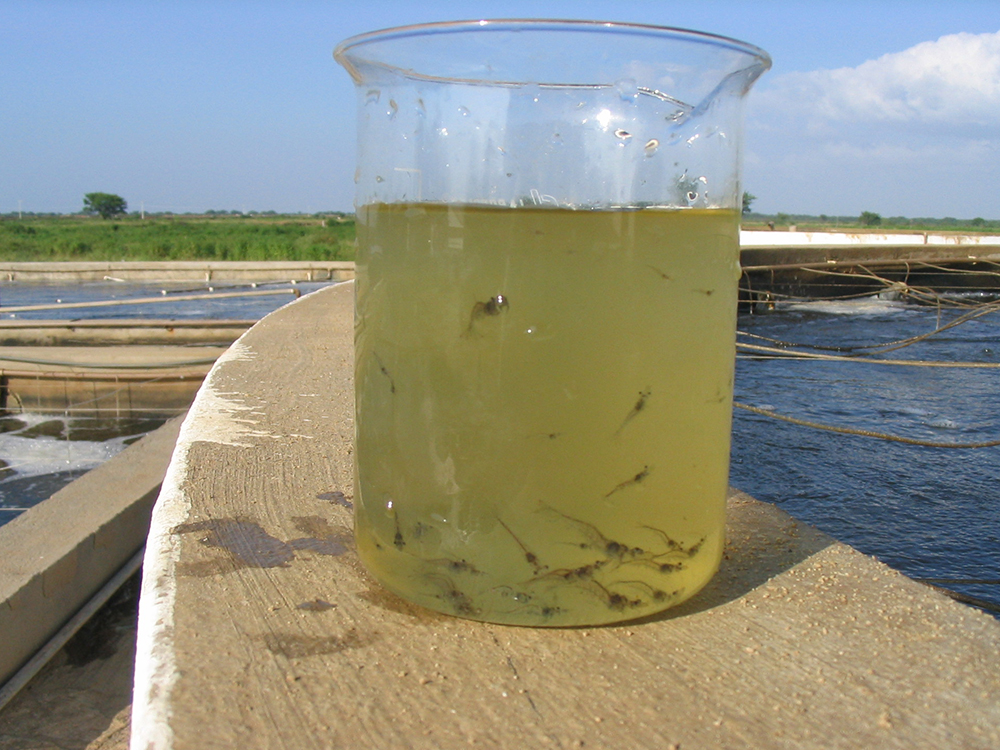
Health & Welfare
Building a better shrimp nursery, part 1
Shrimp nursery systems offer an important opportunity to increase profits. Properly designed and operated nurseries are highly biosecure facilities to grow postlarvae at very high densities.
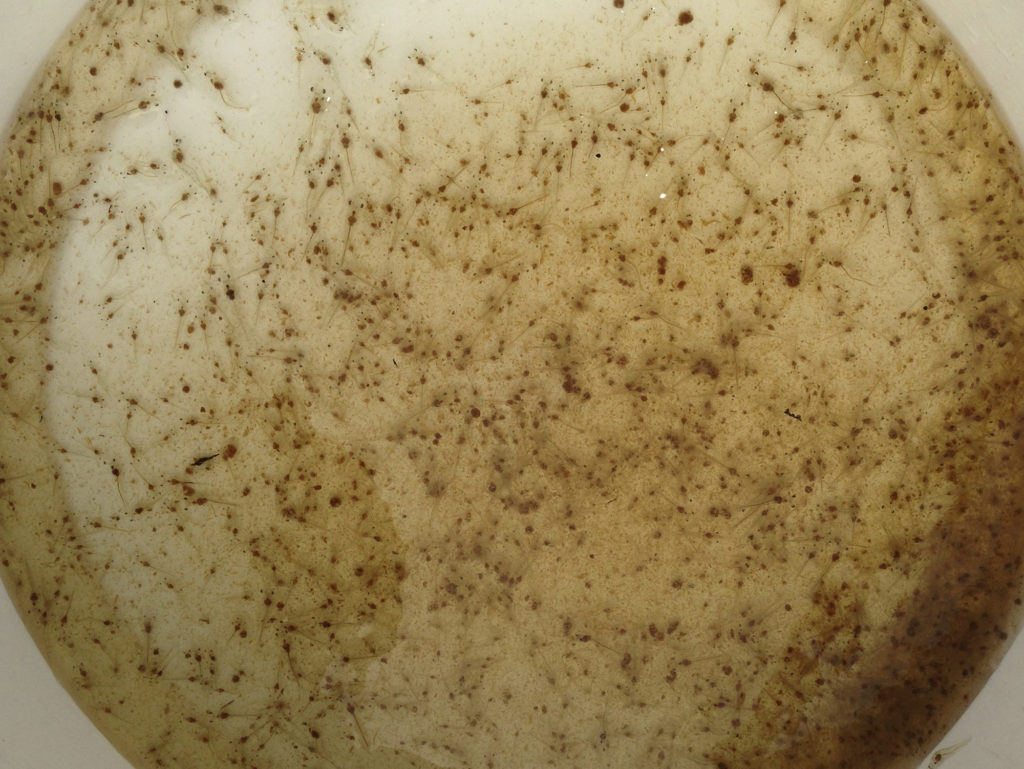
Health & Welfare
Building a better shrimp nursery, part 2
Shrimp nursery systems offer the shrimp industry an important opportunity to increase profits, by helping produce strong, healthy and uniform juveniles with significant potential for compensatory growth after their transfer for final pond grow-out. Biofloc technology and water quality are critical components of shrimp nursery systems.



